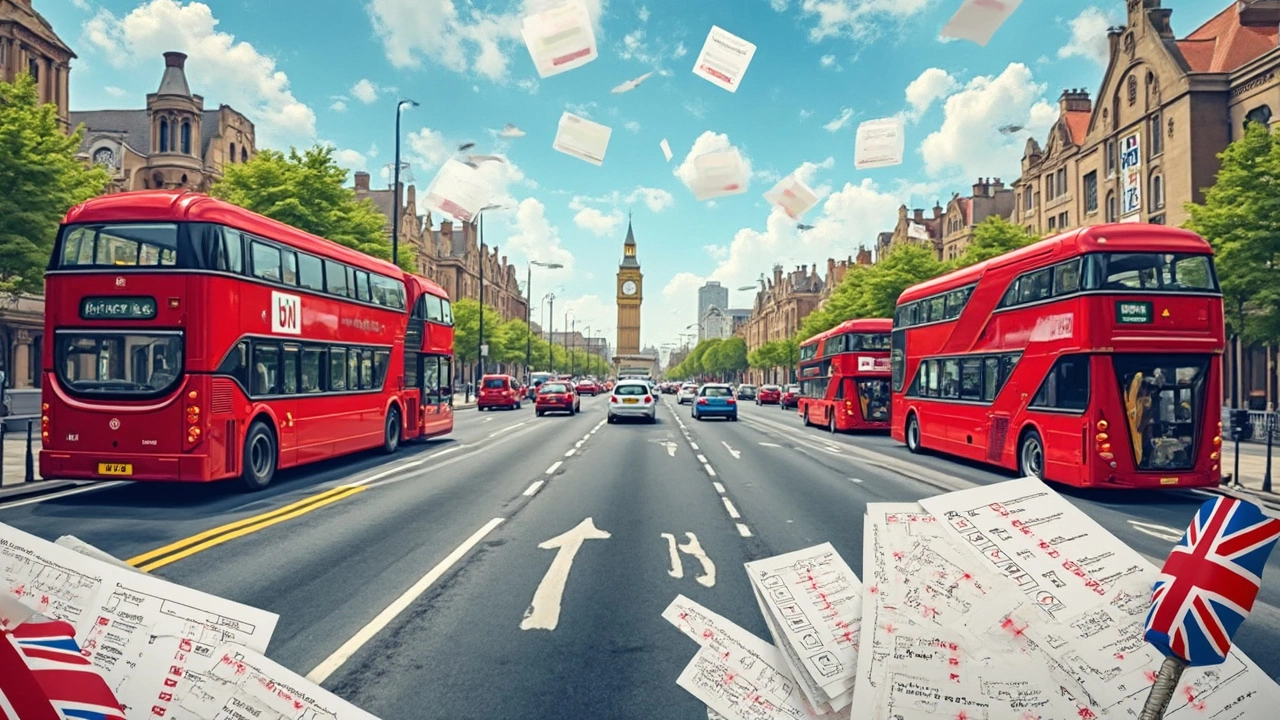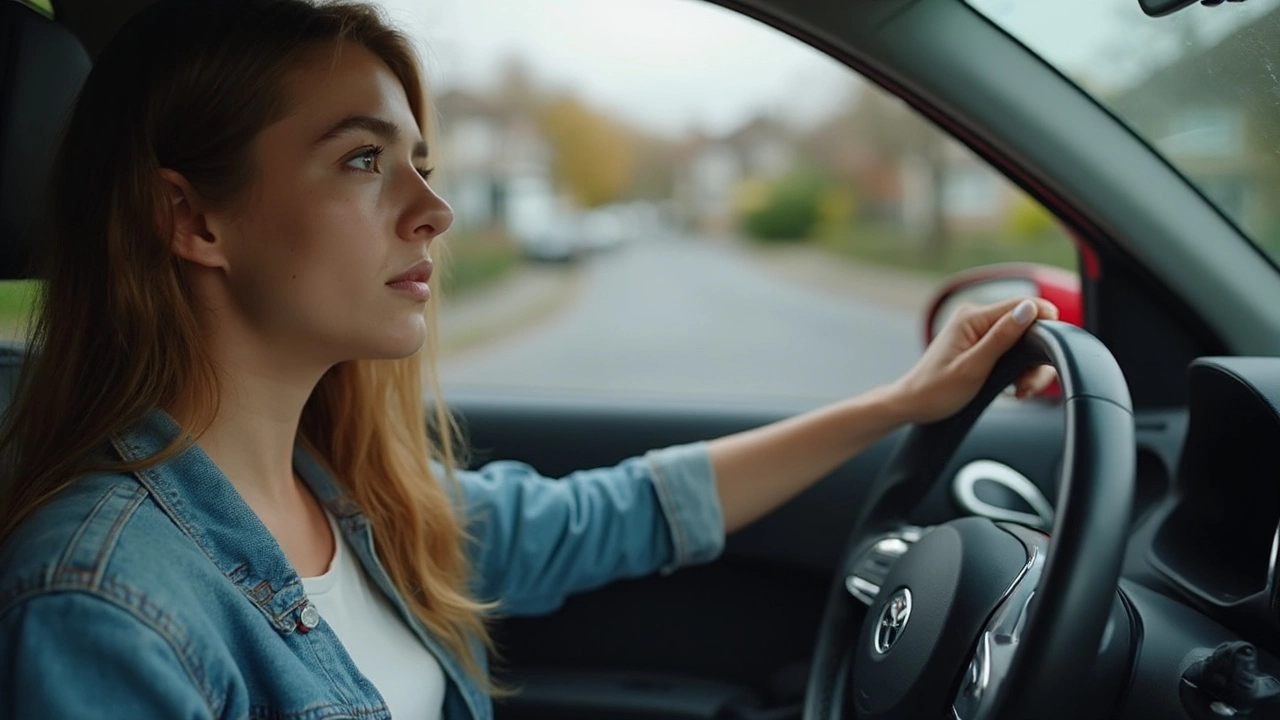Want your driving licence without months of lessons? That’s exactly why intensive driving courses exist. Instead of dragging lessons out over weeks and weeks, you’ll cram everything into a handful of days—sometimes in just one week. Sounds a bit wild, right? But it’s a real thing, and more people are choosing this faster path every year.
The main idea here is to get you behind the wheel as much as possible, with lessons often lasting several hours a day, back to back. You’ll learn, practice, and polish your driving skills in a super concentrated way. Most courses include your driving test at the end, so you know exactly what you’re working toward from day one. If you need to pass fast (think new job, uni, or a move), this is probably the quickest legal route in the UK.
- What Makes a Driving Course 'Intensive'?
- Is an Intensive Course Right For You?
- What to Expect During the Course
- Making the Most of Your Intensive Course
What Makes a Driving Course 'Intensive'?
The name says it all—an intensive driving course is all about squeezing as many lessons as possible into a short period, sometimes just a week or two. Unlike standard lessons that might stretch on for months with an hour or two each week, these courses ramp things up with daily sessions, often between 4 to 6 hours a day. This pace crams every skill and bit of road know-how you’ll need for your test, with barely time to forget what you learned the day before.
What really makes the course ‘intensive’ isn’t just the speed—it’s the way you’re immersed in driving. Here’s what sets these courses apart:
- You train for multiple hours in one go, usually with a dedicated instructor.
- Courses can be customised to your level—total beginner, had a few lessons, or almost test-ready.
- Most packages include the practical test at the end, so it’s one booking, one block of time, and one clear goal.
- You experience real UK roads, busy junctions, and test routes—all while it’s fresh in your mind.
Wondering how much faster this can be? A typical intensive driving course runs between 18 and 40 hours of instruction over 3 to 14 days, depending on what you need. For reference, a regular learner in the UK averages about 45 hours over several months. If you want the numbers side by side, check out this quick snapshot:
| Course Type | Hours | Duration |
|---|---|---|
| Standard Lessons | ~45 | 3-6 months |
| Intensive Driving Course | 18-40 | 3-14 days |
This all-in approach is ideal for folks who want to limit gaps between lessons and make driving their main focus for a short time. It saves energy, saves time, and for many, it can save money too since you don’t end up forgetting stuff and needing refresher lessons later.
Is an Intensive Course Right For You?
This is the big question. Not everyone is cut out for an intensive driving course, and honestly, that’s okay. These courses are fast, sometimes stressful, and can be a real challenge if you’re not prepared. So how do you know if this route matches you?
If you pick things up quickly and don’t get burnt out by several hours of lessons per day, you’ll fit right in. These courses often suit fast learners, folks who’ve driven a bit before (maybe with family or off the record), or people who just need to scrape off the rust after a break from driving. They’re also perfect for anyone on a tight deadline—new job, moving city, or simply fed up with waiting.
But let’s be real: if you get overwhelmed easily or need more time to process what you learn, a regular-paced course might suit you better. Cramming everything into a week or two can be tough, especially for nervous drivers or complete beginners. Lots of instructors say an intensive course isn’t always the best bet for people who’ve never sat in the driver’s seat before.
- If you have a jam-packed schedule, but can clear out a week, this is a smart option.
- Already know your basic car controls from a bit of unofficial practice? The fast-track style will help you polish skills quick.
- On a budget? Sometimes an intensive level course is cheaper than spreading lessons over months, but always check for any hidden fees.
One survey from AA Driving School found that about 20% of learner drivers opt for intensive driving courses in the UK, mostly for convenience and the pressure to pass quickly. Check with your own nerves and learning style before you sign up. No shame in taking it slow if that’s what keeps you confident and safe!

What to Expect During the Course
Signing up for an intensive driving course is a bit like diving straight into the deep end. The pace is fast and the days are full. So, what actually happens once you’re booked in?
First off, you’ll probably have a chat or quick assessment with your instructor. They want to know if you’ve had any lessons before and if you’ve nailed the basics—stuff like moving off, steering, and finding the brake without panicking. This helps plan how intense your schedule needs to be.
Here’s what your days might look like:
- Lesson blocks: Expect 3–6 hours of driving lessons a day, broken into sessions so you’re not totally wiped out.
- Mock tests: Most courses add at least one “pretend” test under real exam conditions to prep you for nerves and spot where you need more work.
- Instant feedback: You’ll get tips after every drive, covering stuff like clutch control, handling tricky junctions, and nailing parallel parking.
- Theory refresher: If you’re not done with your theory test yet, some courses squeeze in revision sessions or quick test bookings for you.
- Manual or automatic: You can pick whichever car type you want for the whole course. Just remember, passing in an automatic doesn’t cover manuals!
It’s pretty non-stop. You won’t get much “down time” between lessons except for lunch breaks. Make sure you’re eating, drinking, and sleeping well—this stuff really matters for staying switched on.
Most intensive level courses end with your practical driving test. No waiting around for months: you finish your lessons and head right into the exam, often at the same test centre where you’ve done your practice runs. Some places even bundle in the test fee so you don’t have to stress about extra booking hoops.
Want to know your odds? According to Driver and Vehicle Standards Agency (DVSA) figures for last year, about 48% of learners pass their test on the first try, whether they take regular or intensive lessons. Just remember—putting in the work (and paying attention when you’re tired) is what tips the odds in your favour.
For anyone who learns better with a schedule, here’s a common five-day example:
| Day | Driving Hours | Focus |
|---|---|---|
| 1 | 4 | Core skills, traffic basics |
| 2 | 5 | Junctions, rural roads, parking |
| 3 | 5 | Roundabouts, dual carriageways |
| 4 | 4 | Mock test, stressful spots |
| 5 | 2 | Warm-up and final driving test |
Bottom line? You’ll be driving—a lot—and fast-tracking your way to a licence, if you put the effort in. Remember to show up on time, take notes, and don’t be afraid to ask your instructor if you feel stuck on something. Most people come out the other side surprised by just how much they learned in so little time.
Making the Most of Your Intensive Course
Going for an intensive driving course means you don’t have a lot of time to waste. To really get your money’s worth, you need a plan. Start with good prep: brush up on your Highway Code before your first lesson. This isn’t just busywork—it gives you an edge, so you’re not learning the road rules for the first time while you’re also trying to master clutch control.
The timetable is tight, so try to eat well, get sleep, and avoid cramming other big life things into your course week. It sounds basic, but tired brains miss details—like whether that street was one-way or two. On day one, tell your instructor what you struggle with so they can focus lessons where you actually need help. Don’t be embarrassed about weak spots—chances are, everyone has them.
A cool trick: right after each session, jot down what felt weird or tough. Even a quick phone note will do. Then ask your instructor to run through those trouble bits the next day. This focus pays off big when it comes to driving test nerves.
“Taking notes just after a lesson can double how much you remember by the time of your next session—practice builds muscle memory, but review cements the details.” — Neil Greig, Director of Policy and Research, IAM RoadSmart
Practice outside lessons if you can, with someone qualified. Even 30 minutes of parallel parking in a quiet car park makes it way less scary in the test. Lots of folks pass on their first try with this extra drive-at-home time.
Also, take mock tests. Some instructors run these as standard, but if not, ask for one. They’ll tell you exactly what to expect and call out anything you’re missing. Stats from the DVSA even show students who’ve done a mock test are 15% more likely to pass their real test first go:
| Training Method | First-Time Pass Rate |
|---|---|
| No Mock Test | 44% |
| Mock Test Done | 59% |
So, if you want to actually get your licence fast and not just get rushed lessons, make every hour count. After all, smashing your intensive driving course on the first try is the whole point!

